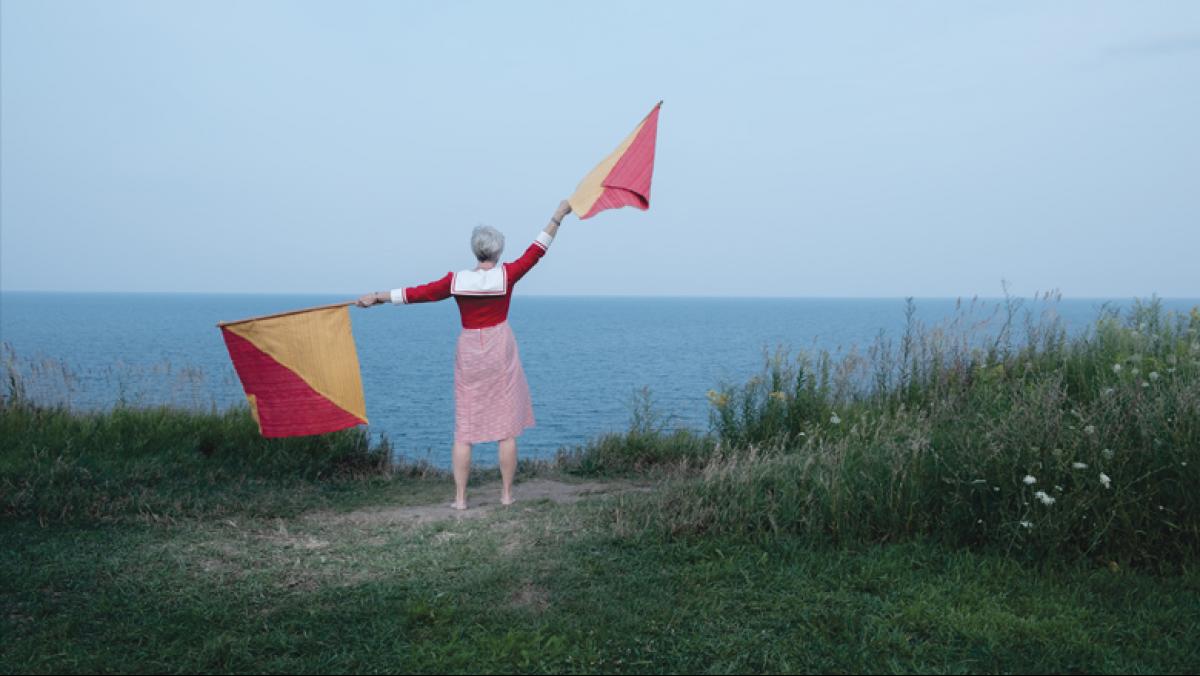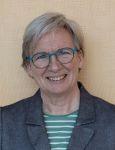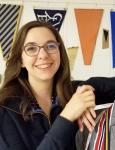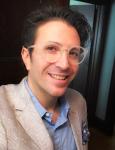Maggie Sasso and Nathaniel Stern, the two Milwaukee-based artists featured in our forthcoming James Watrous Gallery exhibition, use somewhat unconventional means to achieve their artistic ends: Where Sasso uses fiber art to create installations that transform recognizable objects into unusual metaphors, Stern dons a desktop scanner, computing device, and custom-made battery pack to “perform images into existence.” We asked these two artists, both of whom harness the power of performance in their work, to share some thoughts about their respective histories, processes, and selected works made for their shows at the Watrous Gallery.
___________________________________________
Maggie Sasso
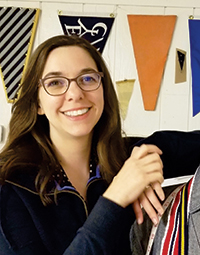 Maggie Sasso uses fiber art to transform recognizable objects into impossible metaphors. She produces conceptual bodies of work that express macrocosmic ideas through microcosmic detail in order to examine the role of material culture in relationship to our collective past. Sasso received her MFA from the University of Wisconsin–Madison and her BFA from Murray State University in Murray, Kentucky, where she was born and raised. She currently works at the Milwaukee Institute of Art and Design as the Textiles Lab Technician and an adjunct lecturer.
Maggie Sasso uses fiber art to transform recognizable objects into impossible metaphors. She produces conceptual bodies of work that express macrocosmic ideas through microcosmic detail in order to examine the role of material culture in relationship to our collective past. Sasso received her MFA from the University of Wisconsin–Madison and her BFA from Murray State University in Murray, Kentucky, where she was born and raised. She currently works at the Milwaukee Institute of Art and Design as the Textiles Lab Technician and an adjunct lecturer.
How does your background influence your work?
I grew up in rural Kentucky and was fortunate to be the child of two talented artists who exposed me to art, museums, music, and books. My parents made things for me and with me. At UW–Madison, I was taught contemporary craft and was encouraged to produce objects that were as well-made as they were conceptually profound. While I was not formally educated in fiber arts, my mother did teach me how to sew in high school. And even though I received both of my degrees in woodworking, I continued to pursue fiber arts projects. For years I worried that I was somehow cheating because I kept making work in what I deemed the “simpler” medium. Then it finally dawned on me that with fiber arts I was playing to my own strengths.
What inspired the strong maritime current in your new works?
I’ve always lived around water: Kentucky’s Land Between the Lakes; Whidbey Island’s Puget Sound; Madison’s Monona and Mendota; Portland’s Willamette River, with the Pacific Ocean a quick car trip away; and, most captivating of all, Milwaukee’s Lake Michigan. But, for the most part, my relationship to water has either been observational or lightly recreational.
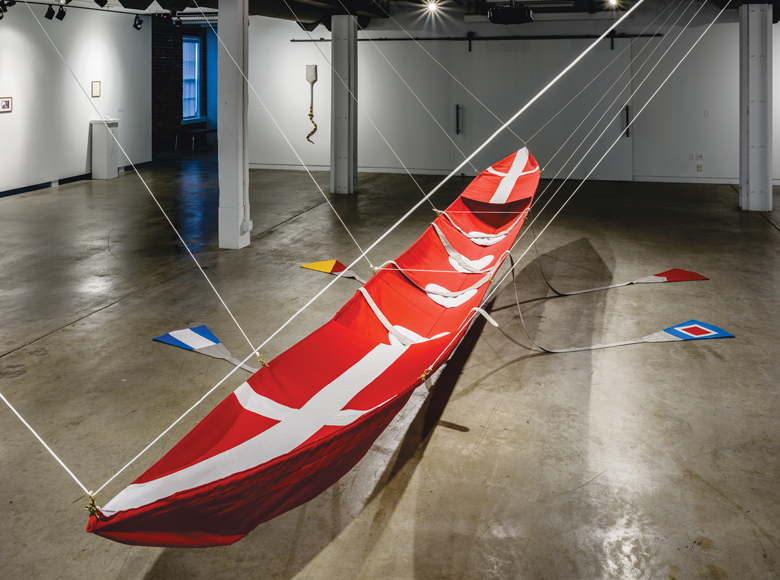
Then, while doing research for a 2010 show, I found a book of sea charts. I became enamored with the aesthetics of ships and sailors. It’s a flexible aesthetic, one that can be overtly humorous and stylized or quite somber; it can be industrial or highly ornate. There is a strong musical aspect to maritime life, too, and so many songs that tell stories were also designed to keep crews organized. One of my previous bodies of work, Haul Away Home, is named for a song that I wrote based on an old sea shanty called, “Haul Away Joe.” The original song, known as a tack-and-sheet, is repetitive and rhythmic, sung to keep everyone in time while raising the sails up the mast.
Your installations and performances often suggest a complex backstory. Do you typically begin with a narrative in mind, or does the story emerge as you create the artwork?
Fore and Aft, my show at the James Watrous Gallery, is an interrogation of the textiles of maritime culture. How dependent are boats on textiles? What happens to the textiles as they deteriorate? Where do nautical craft and contemporary craft intersect? How does the material language of, say, a domestic dishrag contrast with the largely masculine pastime of sea exploration?
Visitors will encounter a ship’s quarterboard sign, rendered in tapestry, handmade rope absurdly rigging the gallery (James Watrous would make a great name for a ship, by the way), and two handwoven objects, Staysail and Y.H.W., which are really about a mother and a daughter. This subject matter should have come as no surprise, as I became a mother three and a half years ago.
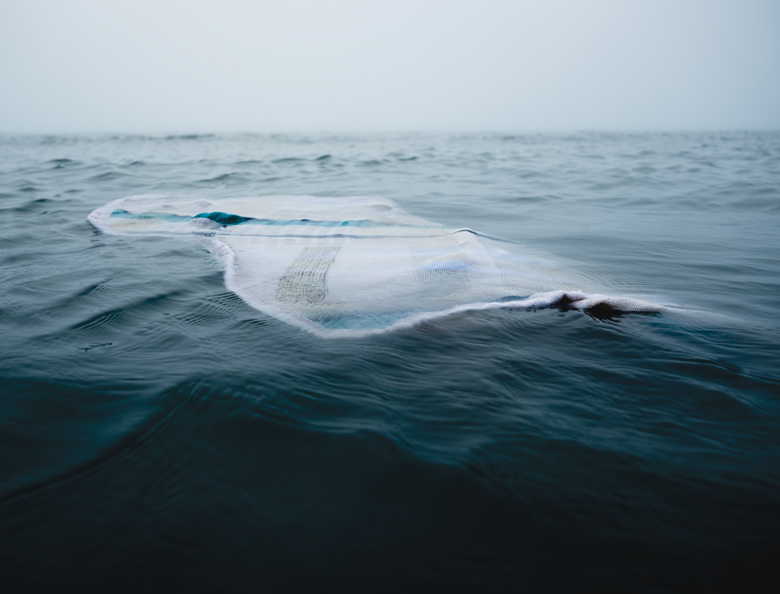
Simply put, a staysail is the smallest sail at the front of a fore-and-aft rigged sailboat of any size. Its job is to keep the boat steady as the main sail is raised and lowered—a metaphor for motherhood if I’ve ever encountered one. Staysail began with a consideration of vulnerability. What happens to the staysail in the event of a shipwreck? Does it quickly degenerate at the bottom of the sea, or become loose and make its way to shore? Even after hand-weaving this sail in order to generate a worn, weathered appearance, I felt that to truly explore my questions the object needed to perform. So I asked a photographer friend to meet me on the shores of Lake Michigan at 4:00 am where we ceremoniously tossed the sail into the waters. The photos of its journey to shore are eerie and complicated and capture what I imagine to be the experience of stumbling onto evidence of a shipwreck.
Here the Staysail story intersects with Y.H.W., which is composed of two semaphore flags, handwoven in the same cotton used to make dishcloths. This time the objects perform with a model: my mother. Her short gray hair speaks volumes as she signals navigational instructions toward an empty sea. The letters stand for something, but also spell out the inverse of a simple question: Why? For me, this performance is about staying brave in the face of tragedy, not giving up, and, yet, slowly coming to terms.
By presenting the photographs next to the objects as if they were displayed in a museum, the viewer is invited into the past life of the object, the narrative of its history.
___________________________________________
Nathaniel Stern
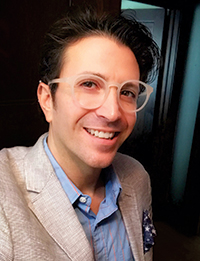 Wearing a desktop scanner, computing device, and custom-made battery pack, Nathaniel Stern wriggles across tables, swings over flowers, pogos over bricks, and follows the wind over water lilies in ponds to capture beautiful and surprising scans, which are then produced as archival artworks. Stern holds a joint appointment as associate professor in Art+Design and Mechanical Engineering at UW–Milwaukee, and is an associate researcher at the University of Johannesburg. His book, Ecological Aesthetics: artful tactics for humans, nature, and politics, which outlines an ecological approach to art and aesthetics, was recently published by Dartmouth College Press.
Wearing a desktop scanner, computing device, and custom-made battery pack, Nathaniel Stern wriggles across tables, swings over flowers, pogos over bricks, and follows the wind over water lilies in ponds to capture beautiful and surprising scans, which are then produced as archival artworks. Stern holds a joint appointment as associate professor in Art+Design and Mechanical Engineering at UW–Milwaukee, and is an associate researcher at the University of Johannesburg. His book, Ecological Aesthetics: artful tactics for humans, nature, and politics, which outlines an ecological approach to art and aesthetics, was recently published by Dartmouth College Press.
What inspired you to strap on a scanner to create images?
The idea came after I had been working with interactive art for a number of years and was asked to produce art for a more traditional gallery setting. At first, I used a digital scanner on the gallery itself—the walls, floor, benches, etc.—and, as I moved around, “compressed” each space and object to the size of the scanner face. Later, using my computer, I re-stretched these spaces and objects to their original size. The resulting images looked like a cross between impressionist landscapes, surreal objects, and abstract expressionist textures. I dubbed the new form, Compressionism.
My favorite living artist, William Kentridge, came to that first Compressionist exhibition opening and suggested I go out and scan the landscape. This led to my current body of work, of which Autumnal Tints is a part. For this type of work, I strap a desktop scanner, computing device, and custom battery pack to my body, and then perform images into existence. The dynamism between my body, the technology, and the landscape is transformed into archival artworks that enfold time and space, sensation and action.
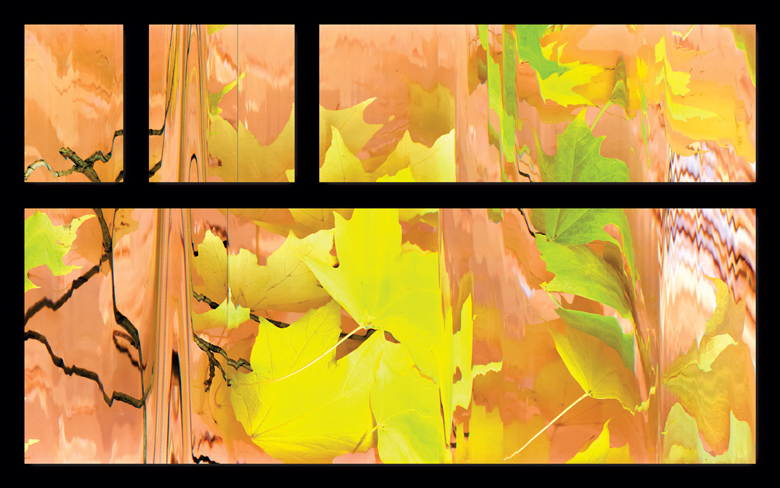
I began by scanning botanical gardens in Johannesburg and, over the years, have produced a dozen bodies of work in this vein, including a 250-square-foot water lily installation (inspired by Monet’s painting at the MoMA, which I often visited as a teen), a series of underwater prints with a marine-rated scanning rig (at the suggestion of my brother-in-law, a scuba instructor), and now, in part thanks to public parks and media scholar Richard Grusin, a series of metal prints that came from the fall foliage of the Milwaukee Lakefront.
It’s funny. The technology has changed so much: scanners were high tech in 2006 but are quaint at this point. Yet the work’s potency as rippling images, exploring how we move and are moved by technologies, bodies, and landscapes—it still works. And I love it when people suggest new things to try or go out and do it themselves.
Is there a paradox in using digital tools to amplify messages about how we use our senses—our bodies—to relate to our physical environment?
I don’t think so. Computers have bodies. We carry them around with us all the time in our pockets and backpacks. Too, information has substance, and takes up space in the form of data. If I am the only one who knows something and I die, well, that knowledge is gone. Websites need servers for storage and cables to travel; books need paper, computers, or tablets for reading and writing; wi-fi literally resonates with what we want to know via the air around us. Information is not immaterial. I mean this in both the literal and figurative sense.
Conversely, while we sometimes forget our bodies in front of a screen, our backs and eyes later remind us that we should have given them more attention (something I am aware of as I age).
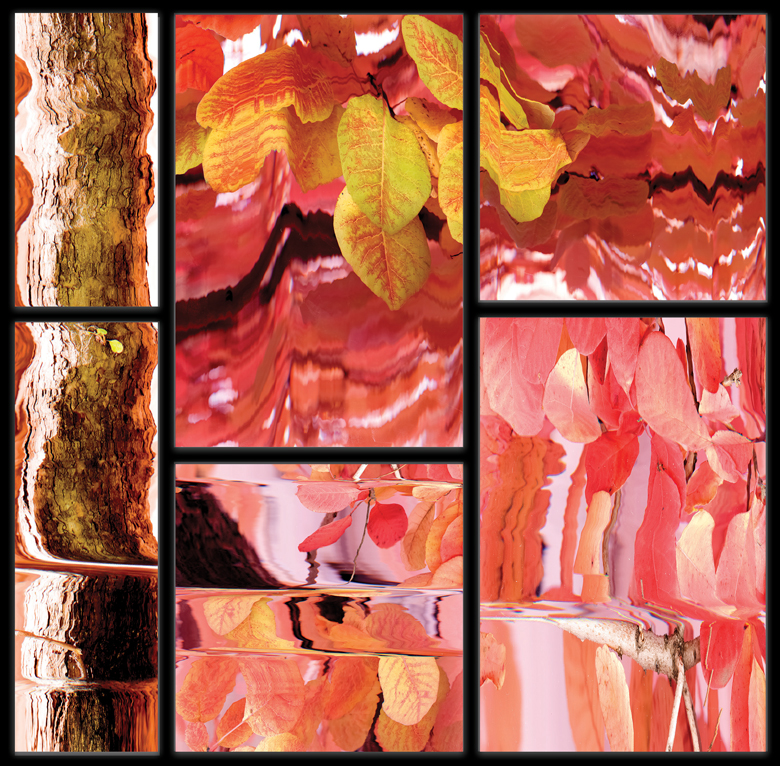
And so a lot of my work amplifies these relationships, has us move and be moved, think through and think with, concepts and materials, data and things, together. I have us play between bodies and language and their technologies in my interactive art; between sensing and images and their workings in the prints from the Autumnal Tints series.
Tell us a little more about how you make the actual prints.
Each multi-panel, modular work is printed on high-gloss metal in a process whereby the ink is heated into a gas and then pressed into porous aluminum, creating a sheen not unlike a computer screen. They are mounted and framed, floating and without glass, in wood boxes.
For me, the Autumnal Tints series has always been an exploration of the relation between body, technology, and landscape. The combination of the earthy and vivid colors, the captured movement, and the reference to digital forms because of that sheen, and the lines and pixels that point to the scanner and computer matrix, all work to amplify how each—body, technology, and the landscape—are never that far apart.
See Sasso & Stern's exhibitions from November 16, 2018, to January 27, 2019, in the Wisconsin Academy's James Watrous Gallery, 3rd Floor, Overture Center for the Arts.

